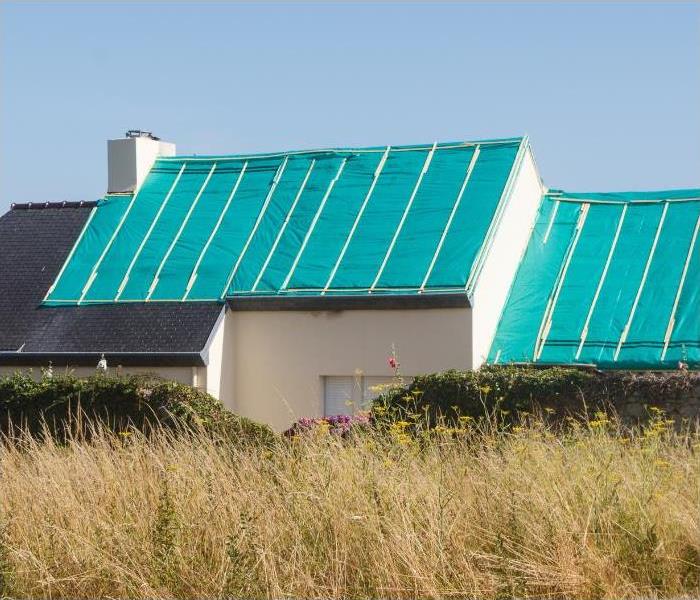Emergency Roof Tarp: The #1 Best Way To Avoid Water Damage
10/8/2021 (Permalink)
After a property has experienced roof damage, the owner must quickly contact restoration professionals for emergency roof tarp services.
No matter the type of roof a property has, it will always be susceptible to having leaks or damages. In fact, it doesn't take much to cause a leak in a property. The professionals at SERVPRO of Union, Towns, Fannin & Gilmer Counties receive many calls a year for emergency roof tarp services after:
- A heavy branch or entire tree falls and damages the roof.
- A storm with high wind speeds causes shingles to go missing.
- An old roof has holes.
You now know the common calls that our SERVPRO professionals receive regarding roof tarping, but are you now wondering what the emergency roof tarp process looks like? Well, we're here to explain! The professionals at SERVPRO want you to avoid water damage. If you ever need emergency roof tarp services, SERVPRO is available 24 hours a day 7 days a week, for emergency services.
Our emergency roof tarp process
The professionals at SERVPRO of Union, Towns, Fannin & Gilmer Counties have years of experience tarping roofs of different sizes. To ensure that each roof is tarped in the quickest amount of time, we have created a process that ensures quality and fast installation times.
- Measure & Inspect: To start the emergency roof tarp process, we will first measure and inspect the roof to determine damages that require tarping.
- Pre-mitigation pictures: All of our professionals know the importance of taking pre mitigation pictures of the damaged parts for insurance claim purposes. We will take pictures before any work is performed.
- Remove debris: Next, we will remove any debris on the roof. It is best to leave a roof clean at all times to avoid any gutter clogs.
- Cover the damaged roof: This part of the process is covering the damages with a tarp.
- Secure the tarp: The final step in our emergency roof tarp process is securing the tarp. To adequately secure a tarp, the ending of the tarp will need to be wrapped around a piece of lumber. The lumber will serve as an anchor so that the tarp stays secure. The amount of lumber used will vary depending on the extent of the roof damage.
The best type of tarps for temporary roofing
No matter who you choose to perform emergency roof tarp services at your property, you need to know what kind of tarp will be installed. The best types of roof tarps for temporary roofing are UV-treated, heavy-duty, and waterproof.
Here are some questions to consider when choosing a temporary roofing tarp:
- Is it designed to withstand abrasion and heavy winds?
- Can the tarp withstand different types of climates (Winter/Summer)?
- Is it mold and mildew resilient?
- Is it flame retardant?
- Does it come in different colors?
- Does it have a certain odor?
The above questions will help property owners choose the best emergency roof tarp to protect their property.
Wrapping up
We hope you enjoyed learning about roof tarps and the process the professionals at SERVPRO of Union, Towns, Fannin & Gilmer Counties follow when tarping a roof.
Please contact us today if your property has recently had damages to the roof and requires emergency roof tarp services. The professionals at SERVPRO are available 24/7, 365 days a year, and promise to treat your property as if it were our own. When you call us, you will receive a team of IICRC certified professionals who will quickly install an emergency roof tarp because we understand that an emergency roof tarp is the best way to avoid future water damage.






 24/7 Emergency Service
24/7 Emergency Service
